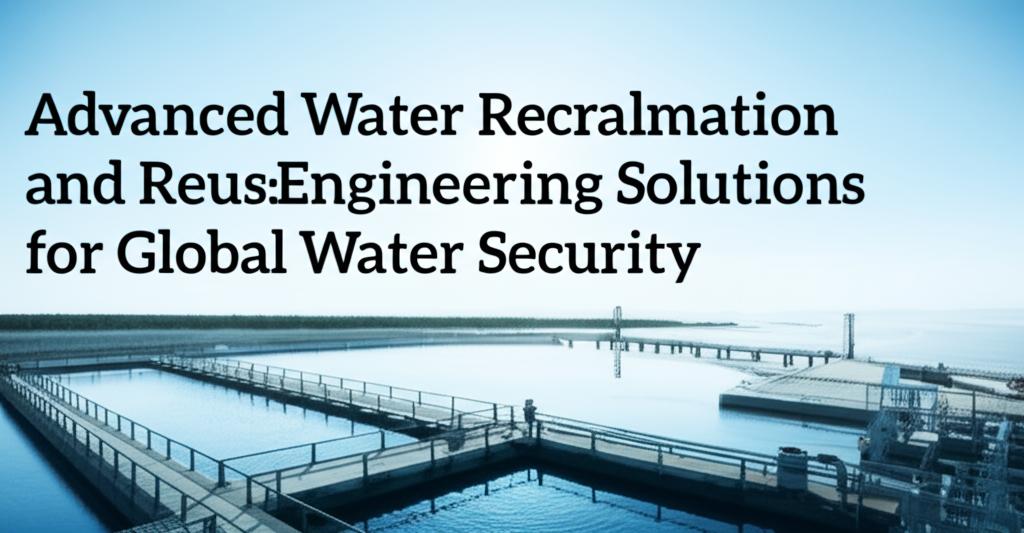In an era marked by increasing water scarcity due to climate change, population growth, and urbanisation, securing reliable access to clean water is a paramount global challenge. Advanced water reclamation and reuse offer a suite of sophisticated engineering solutions that transform wastewater from a perceived liability into a valuable resource, bolstering water security worldwide.
Wastewater, whether from municipal or industrial sources, can be treated to various quality standards, making it suitable for a wide range of applications. This significantly reduces the pressure on traditional freshwater sources like rivers, lakes, and groundwater. The drivers for water reuse are clear: growing demand, depletion and pollution of existing water bodies, and the increasing frequency and severity of droughts.
Cutting-edge engineering solutions are at the heart of modern water reclamation. Key technologies include:
- Advanced Membrane Filtration: Techniques such as Microfiltration (MF), Ultrafiltration (UF), Nanofiltration (NF), and Reverse Osmosis (RO) act as physical barriers, removing progressively smaller particles, microorganisms, salts, and other contaminants. Membrane Bioreactors (MBRs) combine biological treatment with membrane filtration for highly efficient purification.
- Advanced Oxidation Processes (AOPs): Technologies like UV/Hydrogen Peroxide or Ozonation effectively destroy persistent organic pollutants, pharmaceuticals, and pathogens that may survive conventional treatment.
- Biological Treatment Innovations: Enhanced biological processes, sometimes using specialized microbial communities or even worms, efficiently remove nutrients (nitrogen, phosphorus) and organic matter. Some systems can even recover biogas for energy.
- Digital Integration and Smart Management: AI, sensors, and predictive analytics are increasingly used to optimize treatment processes, monitor water quality in real-time, manage distribution networks efficiently, and predict maintenance needs, enhancing reliability and reducing costs.
- Decentralized and On-site Systems: Tailored treatment systems are being implemented directly at the point of use (e.g., large buildings, industrial facilities), reducing reliance on large, centralized infrastructure and minimizing transportation costs.
The applications for reclaimed water are diverse and expanding:
- Non-Potable Reuse: This is the most common application, including agricultural and landscape irrigation, industrial process water (e.g., cooling towers, boiler feed), toilet flushing, dust control, and construction.
- Environmental Reuse: Treated water can be used to replenish depleted aquifers (groundwater recharge), restore wetlands, and augment stream flows, supporting ecosystems.
- Potable Reuse: This involves treating water to meet stringent drinking water standards.
Indirect Potable Reuse (IPR): Highly treated water replenishes a groundwater basin or surface water reservoir that eventually supplies drinking water.
Direct Potable Reuse (DPR): Purified water is introduced directly into a potable water supply distribution system, either immediately upstream of or within a drinking water treatment plant.
Despite the technological advancements, challenges remain. The capital and operational costs of advanced treatment facilities can be significant. Public perception and acceptance, particularly for potable reuse, require ongoing education and transparent communication about the safety and reliability of the processes involved. Establishing clear regulatory frameworks and ensuring consistent monitoring are also crucial.
However, the momentum is undeniable. The global market for water recycle and reuse technologies is projected to grow substantially. Cities and industries worldwide are increasingly integrating water reuse into their long-term water management strategies. Singapore's NEWater program and initiatives in water-stressed regions like California, Arizona, and the Middle East demonstrate the viability and necessity of these approaches.
Advanced water reclamation and reuse represent a critical shift towards a circular economy model for water management. By leveraging sophisticated engineering solutions, we can turn wastewater into a sustainable resource, securing water supplies for communities, industries, and agriculture, and ensuring greater resilience in the face of global water challenges.

